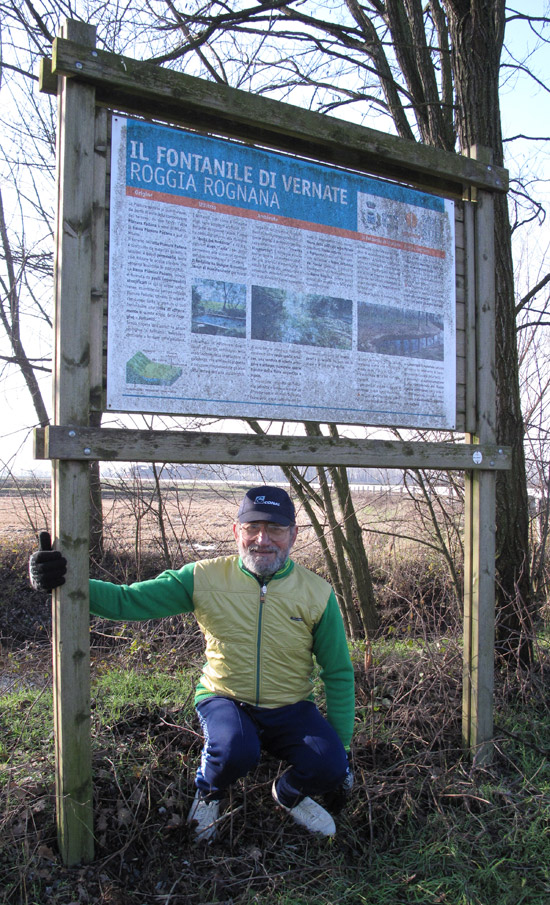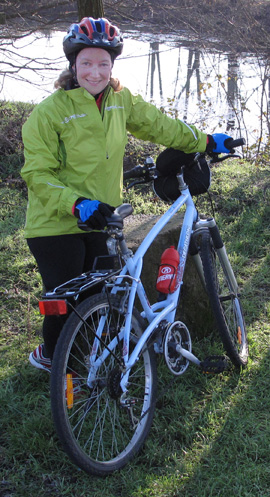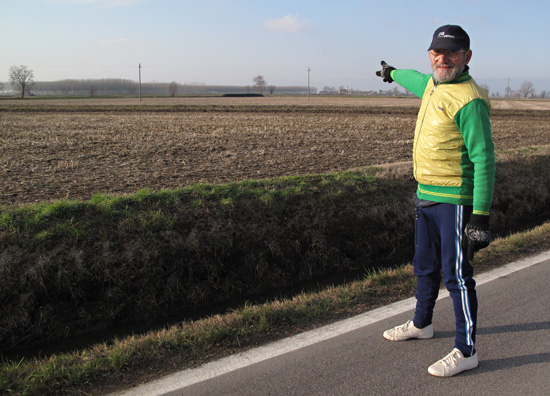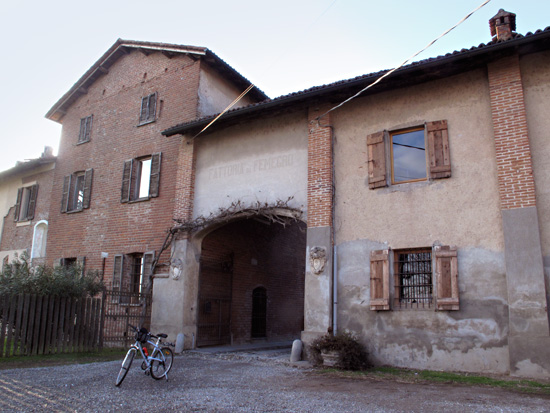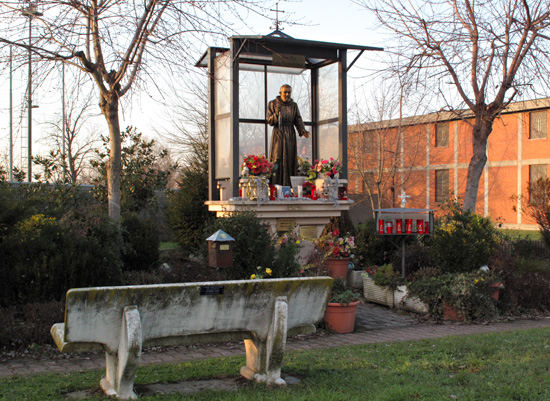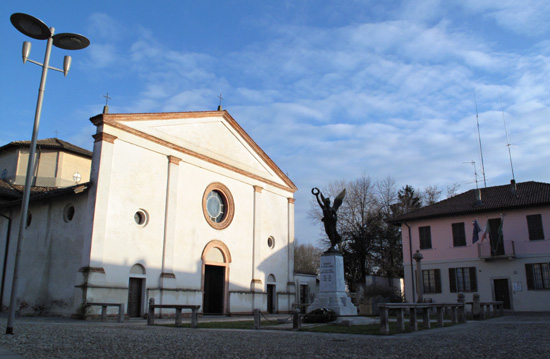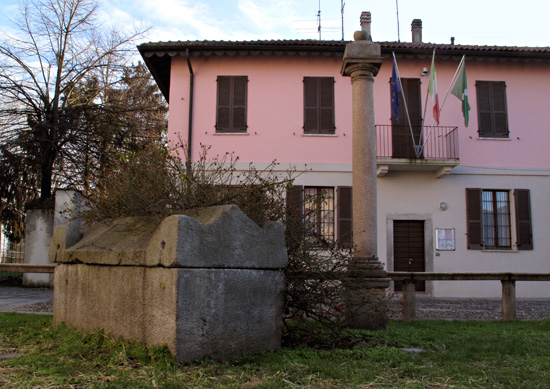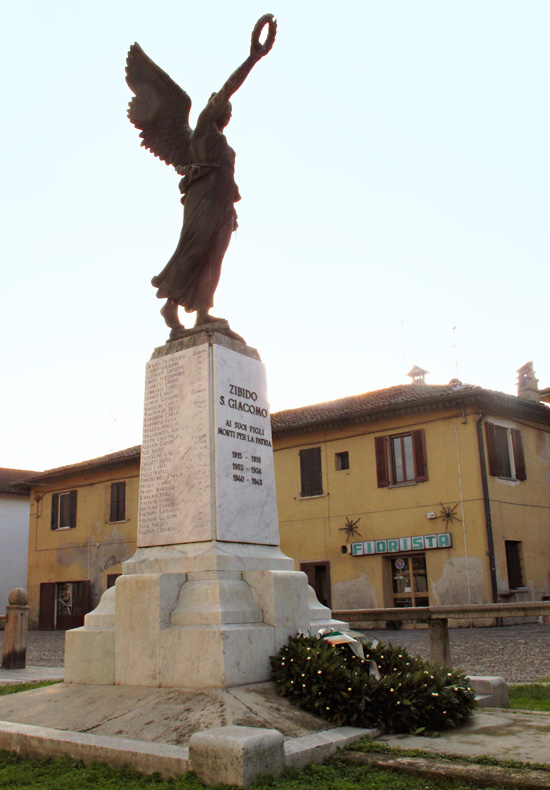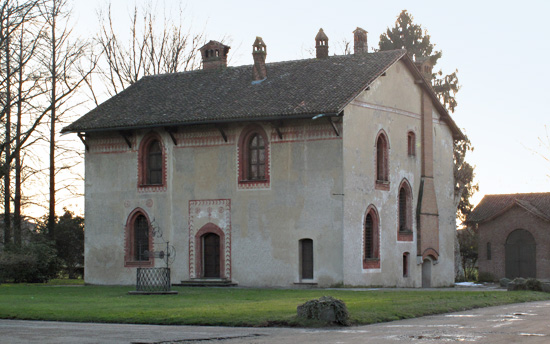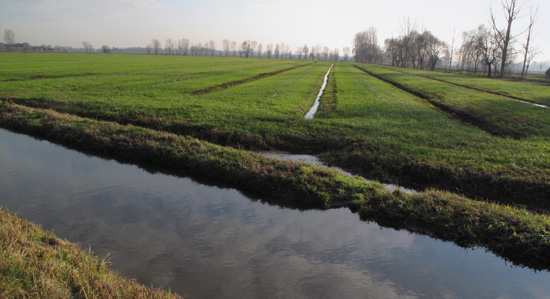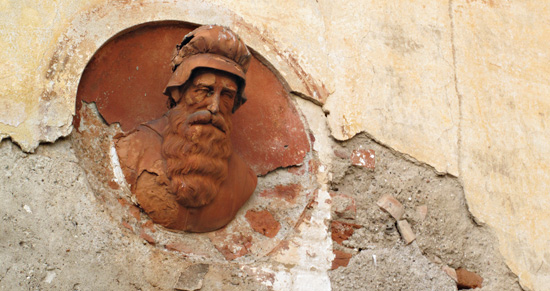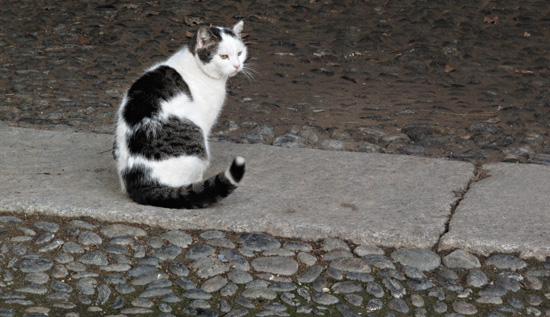“I was born in 1945 during the war years and I grew up with family members all around me talking about politics and The War. They didn’t always agree. I think that being surrounded by these discussions as a child is why I love history so much today.”
Today Angelo became my second personal tour guide in two weeks, giving me yet another “3-hour-tour”. I just rode my bike all around the countryside southwest of Milano with my “History Buff on Wheels”.
When the sun came in the window this morning for the first time in ages, it woke me up and promised me a 45 degree day and my treasured, usual bike ride. I got the day, but not my usual ride. After pedaling along the Naviglio Pavese for about 20 minutes, I caught up with another rider and remarked how nice it was to be out. We talked for a minute or two as we rode, then I zipped ahead feeling full of energy and wanting to go faster. But he caught up with me. It was Angelo. We rode on, talking all the way. Feeling spontaneous and trusting, I agreed to his suggestion that we ride on further than I normally would have gone.
(I usually keep my rides to an hour and a half or two hours, and haven’t done much exploration alone on the more remote bike paths.)
Sure! Encounter some man on the bike trail and follow him all over the countryside! But of course!
We ended up riding on the narrow roads that wind between rice fields and other farm land. The whole time Angelo was relaying the history of Milan, Italy, Europe, WWII, Mussolini and Hitler… Berlusconi, Bush and Obama. He talked about the hardships during the wartime and how people were sustained by the rice of southwest Milano. (He doesn’t speak a word of English, by the way.)
He pointed out where both his mother and father were born, and where they are both buried (Zibido San Giacomo). Angelo took me to old, fortified “cascine” – country farmsteads with castle-like main buildings and outbuildings – most refurbished and still in use as modern-day farms carrying on. He pointed out places where Leonardo da Vinci had been, worked, designed and created. Leonardo’s hand and mind are all over this local land.
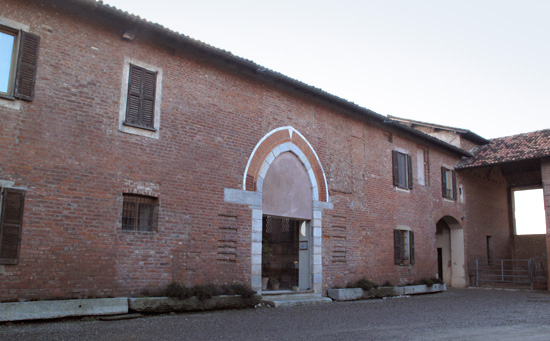
Within the inner courtyard of Cascina Femegro is this beautiful arched doorway. Straight across from it, 100 yards, are cattle in their stalls. A little girl was riding on her tricycle.
I saw a shrine in Zibido to Padre Pio (who had the “stigmata” markings matching Christ’s); the sarcophagus of San Giacomo, c. II-IX cent. – St. James – in the central courtyard of the town by the same name; and an old cascina, “Ca’ Grande”, Palazzina Pusteria Busca Pozzi.
(While riding through Zibido, Angelo’s daughter passed us in her car, going home. He rode to the house a half block away and told her about “this American woman”.)
Angelo explained the “marchite” – marshes – the rich, fertile land perennially wet from “i fontanili”, the underground aquifers and springs of the area. During the winter the ground’s surface may freeze but the ground itself is kept warm by the rising water. The farmed land has been formed into wide, humped rows, allowing the water to flow between the rows; the row peaks begin to grow grass earlier in the Spring than other locales. The milk from cows raised on this grass is said to be superlative.
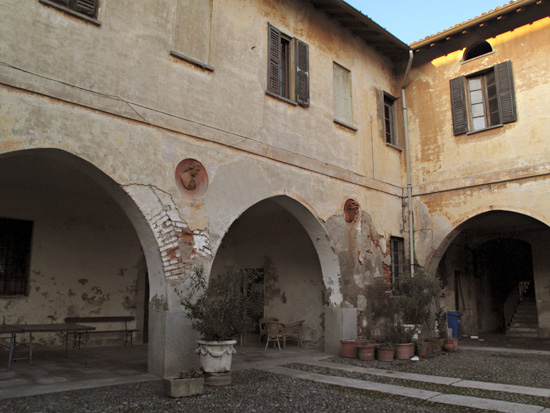
An old “cascino” back alongside the Naviglio Pavese, at the turnoff to Zibido; I think Angelo said it was “San Lorenzo”. Leonardo spent time here. In the inner courtyard, there are bas-relief busts of various people jutting from the walls.
Our route today was: South along the Naviglio Pavese to Binasco. West to Vernate and Calvignasco. North up through Rosate, back east to Noviglio, Mairano and Zibido San Giacomo. Angelo rode almost all the way back to Milano with me, to within 10 minutes of my apartment. He wanted to show me the maritime locks along the canal that Leonardo had designed.
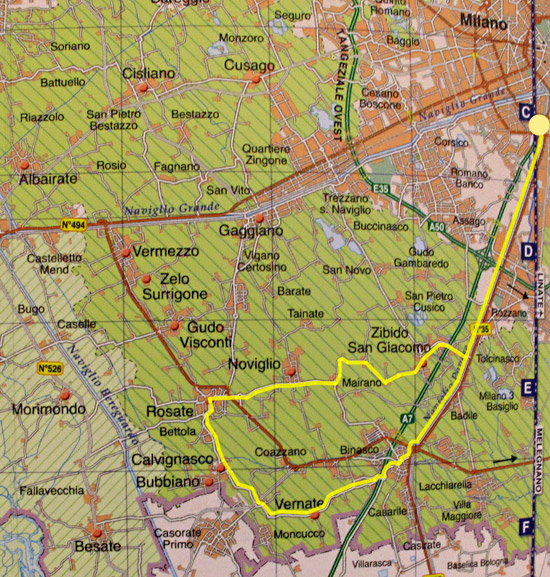
Our route – in yellow – through the farmland. My usual route is down the canal to Binasco and straight back. I’m going to feel this unusually long ride tomorrow!
He suggested I make a ride sometime to the Morimondo Abbey founded in 1136, and to the town of Vigevano to see a show of Leonardo’s work.
(I’m on stun. I could not craft these experiences if I tried!)

